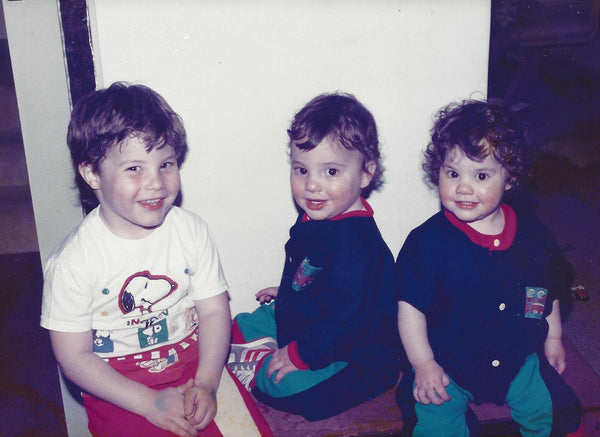One Mother's Quest to End SIDS

The quotes, stories, and experiences included here are those of the individuals and are not representative of Owlet's views or claims about our product. Individuals were not paid and did not submit their information as part of any paid promotion by Owlet. The content provided on this blog is intended for informational and educational purposes only. It is not a substitute for professional medical advice, diagnosis, or treatment. Always seek the advice of a qualified healthcare provider with any questions you may have and to learn more about your child's specific needs.
By: Dr. Carmel Harrington
Intro
For the last 32 years, I have been committed to finding answers to questions no parent should have to face - why do babies simply not wake up? As a mother who lost a child to SIDS, my life as a biochemist has been fueled largely by my own personal experience.
I am also a grandmother whose grandchildren have used Owlet products for years and I believe in the value of not just the peace of mind their devices provide parents, but the valuable insights that allow parents to make informed and empowered decisions in the interest of their child’s health.
Damien’s Story
Thirty one years ago, my precious young son, Damien, went to sleep one night and never woke up. It was three days before his second birthday. Damien had a twin sister, Charlotte, and an older brother, Alexander. Our family was bereft.
After thorough investigation, no cause of death could be determined. He was yet another child that had died suddenly and unexpectedly in childhood, from no known cause.
Today, many people believe that Sudden Unexpected Infant Death (SUID), which includes SIDS, is something that doesn’t happen much anymore and that it is relatively rare. But SUID claims the lives of more than 3,000 babies each year in the U.S. alone*, and that’s about 9 babies every single day. It is not a rare event and that is why monitoring matters. No parent, grandparent or sibling should ever have to walk the path that we SIDS families have had to endure. It is no one person’s problem - this is a community problem. So it is as a community, standing shoulder to shoulder, that we are working towards finding a solution.
In 2022, my team and I were able to identify, prior to death, a biochemical marker that differentiates SIDS babies. We now know that infants that go on to die from SIDS are low in these enzymes which infers that their arousal system may not be 100% efficient.
I am truly excited by the future possibilities of this research. When I started this journey I was told that trying to find the cause of SIDS was like finding a needle in a haystack. Well, I think we may have found a needle, but we need to understand it more, and we still have a way to go.
We have not found the cause, merely a biomarker, but this is powerful. With the knowledge that SIDS infants have a lower level of an arousal enzyme compared to other infants, we aim to use your generous donations to develop a test to detect, at birth, if an infant has a vulnerability to SIDS.
I believe our work will be done and there will come a day when every parent will be able to let their baby sleep, secure in the knowledge that they will simply wake up.
Author Bio

Dr Harrington, a former Lawyer, originally trained as a biochemist. Following the death of her son, Damien, from SIDS, she committed her life to trying to find the cause of his death. She commenced her PhD in 1996 investigating autonomic function in infants at risk of SIDS. In 2022 she found that 88% babies who died of SIDS had a lower level of an enzyme connected with autonomic function. Her study was the first to identify a biomarker in SIDS infants prior to their death and presents a possibility that with further research infants at risk of SIDS could be identified in their newborn period. She is currently planning her future studies which will include proteomic and metabolomic investigations with her ultimate aim being the development of a test that will effectively detect an infant’s vulnerability to SIDS, and which could be integrated into newborn screening programs.